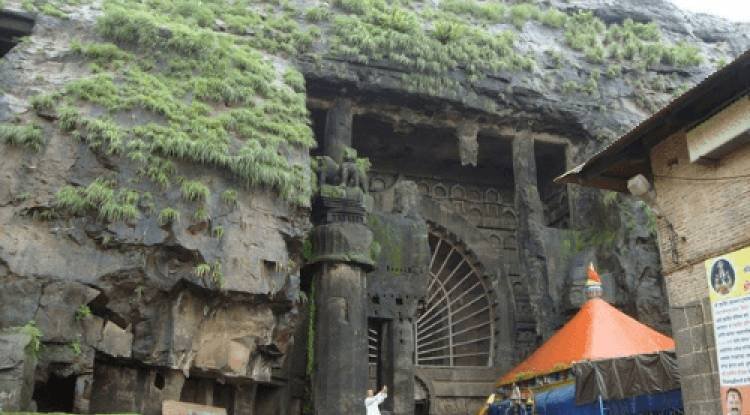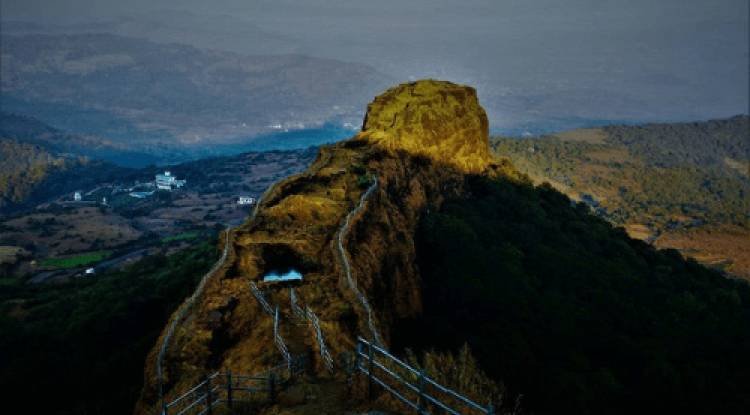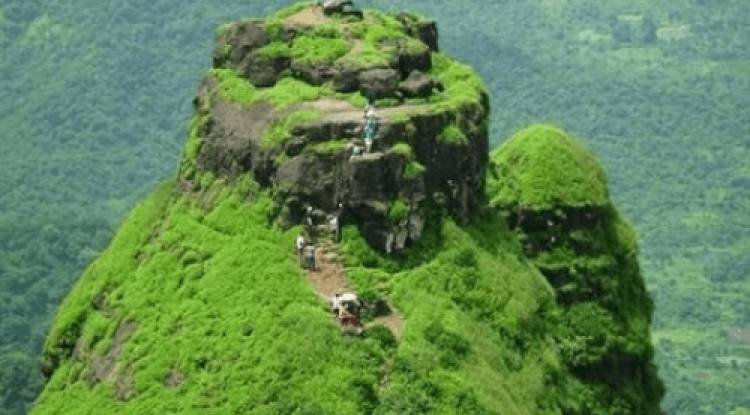
Top Tourist Places near Pune
Pune also called Poona, a famous city of western Maharashtra is the 2nd largest city in Maharashtra (India) after Mumbai. Pune ranks 9th in India by population and also the 9th largest city in the country. The city is at the junction of Mula & Mutha rivers. As Pune is situated 560 meters (1,837 feet) above sea level on the Deccan Plateau, is also called ‘Queen of Deccan’. The city is considered to be the ‘Cultural Capital of Maharashtra ‘and also known as ‘Oxford of the East’.
If you want to explore tourist places near Pune, you will find many good places within a radius of 100kms. Some of the best tourist places are mentioned below from where you will come back with a refreshing mood.
Lonavala

Lonavala is a beautiful hill station in the Sahyadri ranges in Pune district of Maharashtra. Lonavala is at a distance of 64kms from Pune city and 94kms from Mumbai city surrounded by dense forests, waterfalls and dam alongside lakes. Indian Navy's Premier Technical Training Institute named INS Shivaji (formerly known as HMIS Shivaji) is in Lonavla. The set of the hit reality show, Big Boss Malayalam 1, which is Trivandrum based Asianet TV channel’s show is also set up in an unknown estate of Lonavala.
It is famous for its production of the hard candy chikki which is a sweet eatable thing made from different nuts mixed with jaggery. It is a major stop on the railway line which connects Mumbai and Pune.
It is difficult to describe the beauty of Lonavala in words. Get a glimpse of the beauty of that place, let’s move towards Lonavala.
Top Places to Visit in Lonavala
1. Lion's Point

This is a viewpoint at a distance of 12kms from Lonavala station, midway between Bhushi Dam and Aamby Valley which overlooks a deep valley and mountains known for its roasted corn and onion fritters (Hindi name Pakaude). This point does not have any lions but is named so because it is associated with the Lions Club of Lonavala.
Visiting Lion’s Point on the outskirts of Lonavala is a must for any tourist when visiting Lonavala. It is a great place with fantastic weather during monsoon which offers an excellent view of the valley and mountains. One would see dozens of small waterfalls, lush green hills and lakes around during monsoon season. The sunrise and sunset views from here are mesmerizing. The wind is extremely strong at this place and it was quite thrilling to see many adventurous people get close to the edge to get 'that' living-on-the-edge photograph. The drive to the point is also equally scenic.
2. Bushi Dam

Bushi Dam was built from stones and bricks on the Indrayani River in the late 1860s by the British for the purpose of water supply to the steam engines of the "Great Indian Peninsular railway". Monsoons are most suitable to visit dams. Bushi Dam is one of the popular tourist attractions during monsoon season. There are stone steps were tourists can sit and enjoy the water flow. The dam water flowing down on steps gives it a Natural Water Park look.
3. Tiger’s Point

Tiger’s Point or Tiger’s Leap (also known as Waghdari) is also one of the must-see tourist places in Lonavala. It is at a distance of 12km for Railway Station and 12kms from Tung Fort. This point is at Kurvande on the route towards Aamby Vally. If you seem intent you can see an impact of a tiger trying to leap throughout the valley that is why this point got its name. It gives a marvellous view of forests, lush greenery, waterfalls and lakes around.
4. Karla Caves

Karla Caves are just 11kms from Lonavala. It is a complex which is built by cuttings rocks and made many carved chaityas as well as viharas for the monks of ancient Buddhist Indian. Karla is one of the most famous centres of early rock-cut architecture in India. It is one of the best tourist as well as historical places near Lonavala for one who has an interest in history. The place is really worth seeing for its historical value. The artistic work done on the rocks is really eye-catching.
5. Lohagad Fort

Lohagad Fort is at a distance of just 11kms from Lonavala and is one of the most visited forts in Maharashtra. This destination is the perfect combination of ancient architecture and natural beauty. Lohagad Fort was built in the 18th century and is an ideal destination for trekking and nature lovers, especially from Pune and Mumbai. Chhatrapati Shivaji Maharaj used to keep his treasury in this fort. Later in Peshwa time Nana Phadanvis used this fort for living for some time and built several structures in the fort such as a big tank and a step-well.
Mulshi Dam

Mulshi Dam is located at a distance of 53kms from Pune in Mulshi Taluka, Dist. Pune. It is one of the major dams on Mula River in India. Dam’s water is used to produce electricity at the Bhira Hydroelectric plant, operated by Tata Power. Mulshi Dam is one of the most important electricity generating plants in Maharashtra which supplies maximum electric power to Mumbai. Water from this dam is also used for irrigation purpose. The dam was constructed in 1927 AD but in recent years Mulshi and adjoining areas have been developed as a tourist destination. There are several farmhouses & resorts have been developed for the convenience of visitors.
The place attracts several visitors during monsoon season. Here they can get ample opportunities to go on trekking, bird-watching or just take photos. Around the dam, one can visit the lake, and Tamhini Ghat, which are good spots for picnics. Also worth a visit is the century-old Vanjai Mata temple. Adventure enthusiast can go for trekking and camping around the dam.
Sinhagad Fort

The distance of Sinhagad Fort from Pune junction is 32kms in the south-west of Pune city. Located in the Sahyadri Mountains, Sinhagad Fort is a historical significance and architecture. This fort is a perennial favourite weekend gateway for Punekars and on a top list of must-visit places for tourist. The fort was one of the top military outposts during the tenure of Shivaji Maharaj (Maratha Emperor). It was once known as Kondhana and has witnessed a number of battles; one notable battle being the 1670 Battle of Sinhagad. The name, “Sinhagad”, literally means Lion’s Fort signifying its strength and brilliance.
The structure of this fort is a perfect landmark for trekkers as it is located at a height of over 750 meters in the Sahyadri Mountains.
What you can expect from Sinhagad fort - authentic Maharashtrian food, panoramic view of the landscape, clouds drifting over the mountains and releasing a sudden shower and a wonderful time with your family and friends. The place is also famous among photographers and nature lovers.
Tikona Fort

Tikona Fort, also known as ‘Vitantgad Fort’ (the real Marathi name) is a triangular hill fort located near Kamshet which is nearly about 60 km from Pune. The village near the fort is called Tikona Peth and it is reachable after 2km drive from the village.
Not much known about its origin, the fort was in control of Malik Ahmad Nizam Shah I of the Nizamshahi dynasty in 1585. In 1657, Shivaji Maharaj became the ruler of the whole Kokan region, and thus, brought Tikona along with the forts of Karnala, Lohagad, Mahuli, Songad, Tala and Visapur.
Tikona Fort is one of the top places to visit for trekking near Pune. The places that can be covered on your visit to the fort are Trimbakeshwar Mahadev Mandir, Seven Water Tanks, Shakti Sai Baba Mandir, Taljai Temple and Satvahan caves. One can also enjoy the views of Pawna dam and the nearby forts of Tung, Lohgad and Visapur.
Bhimashankar

In the list of gateways of Pune, Bhimashankar is one of the popular travel destinations. For people having a great interest in nature and trekking, Bhimashankar is an ideal destination to visit. Lush greenery and calm surrounding win the hearts of the visitors to enjoy quality time.
One of the main importance of the place is Bhimashankar Temple, dedicated to Lord Shiva and considered as one of the 12 holy Jyotirlinga shrines in India. Legend has it that the name Bhimashankar was originated from the river Bhima which evaporated due to generated between the war of lord Shiva and the demon Tripurasura.
Another attraction of the place is ‘Bhimashankar Wildlife Sanctuary’, a pristine paradise of nature with lush hills, sparkling waterfalls and dense forests, is the home of the Giant Flying Squirrel. Bhimashankar reserves are an all-in-one package of fun, adventure, nature & spirituality.




